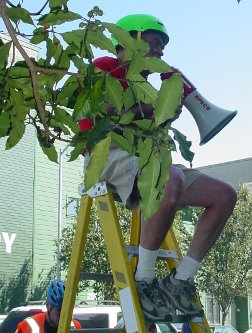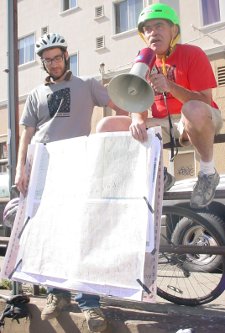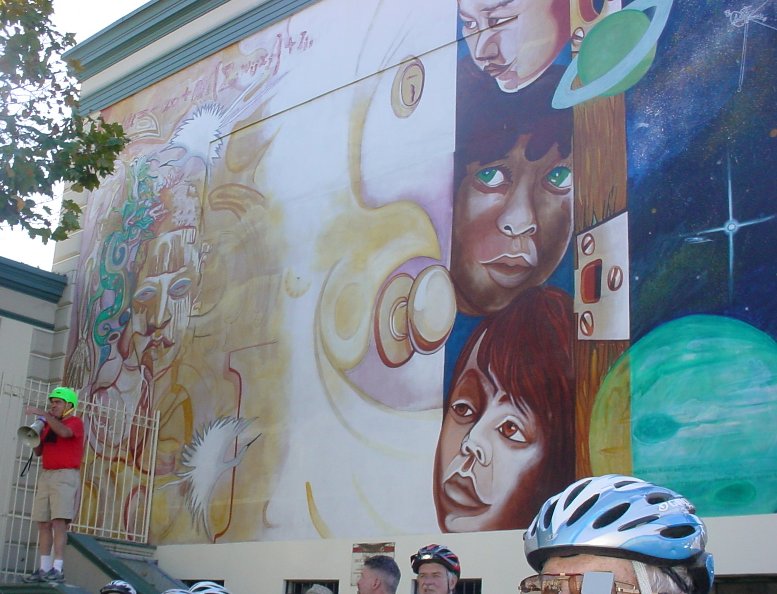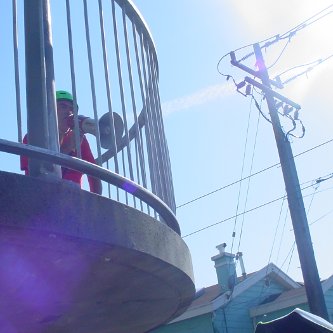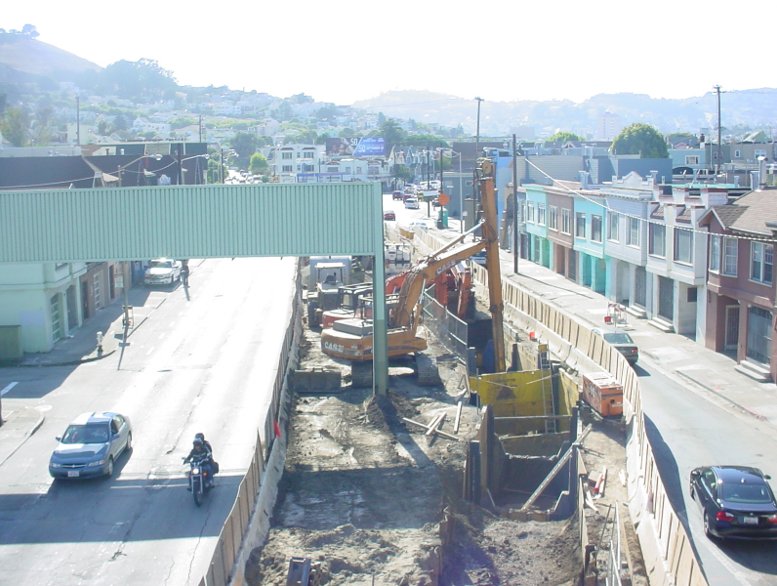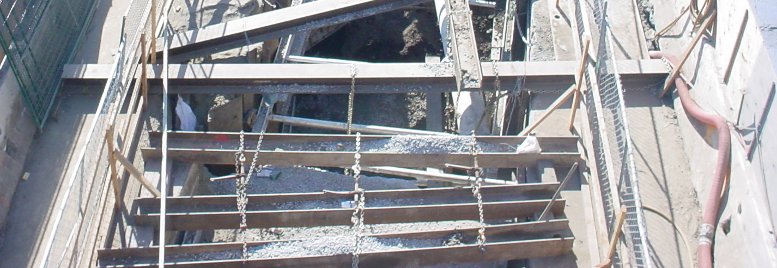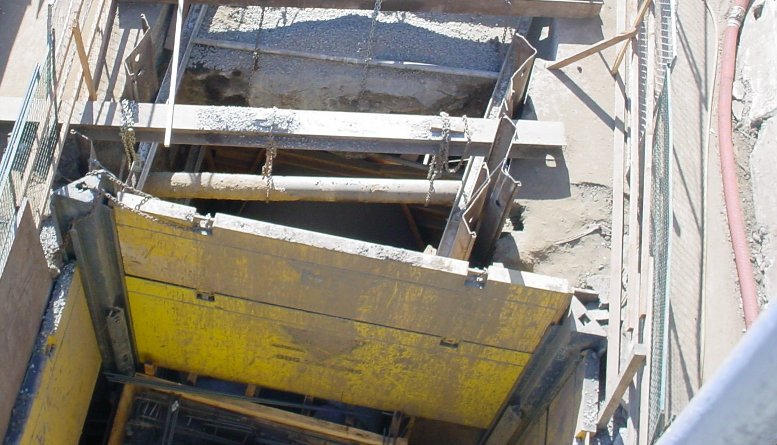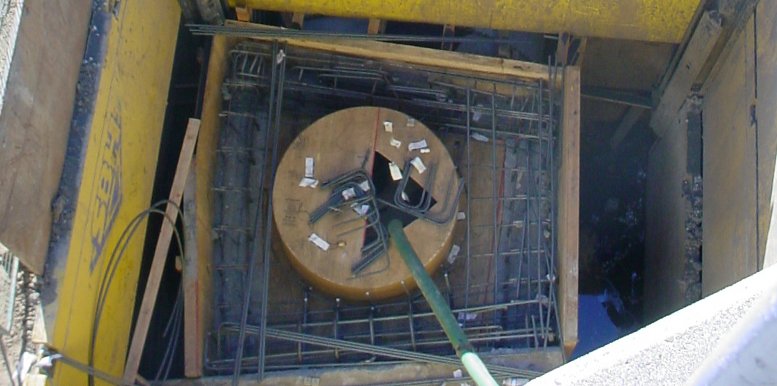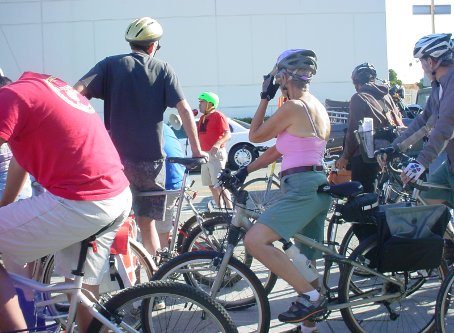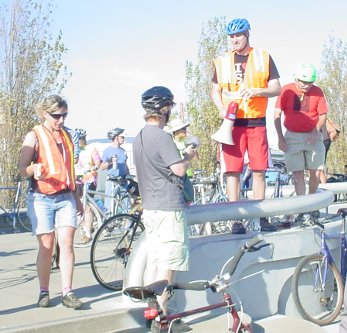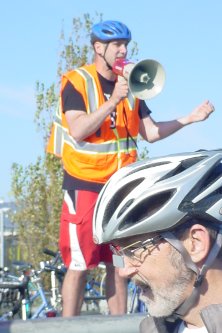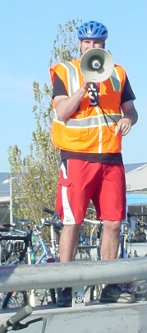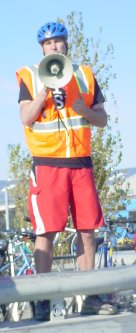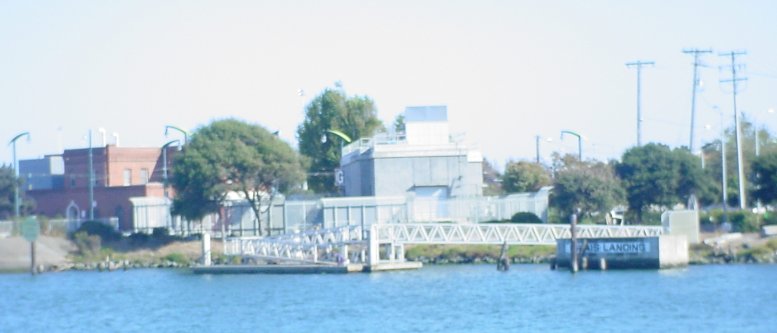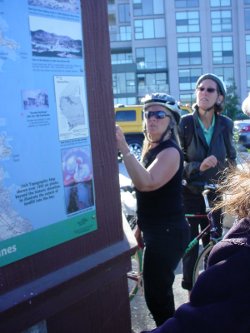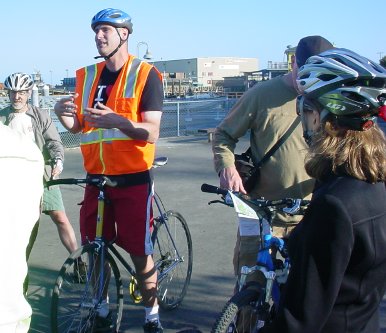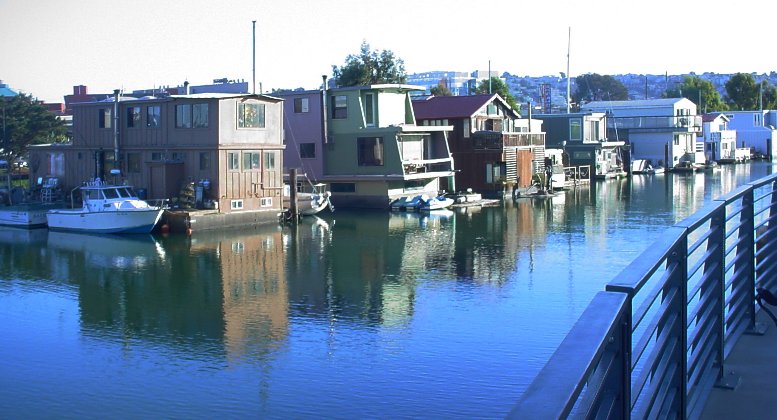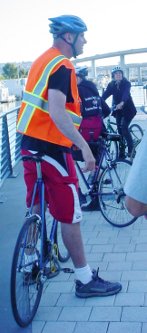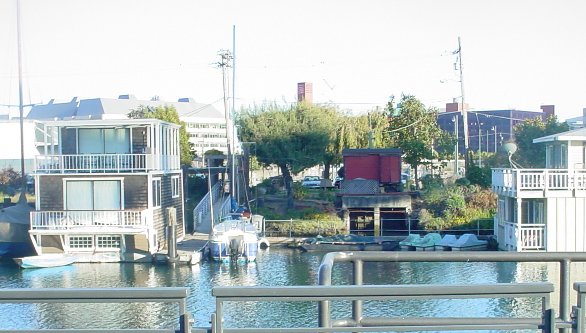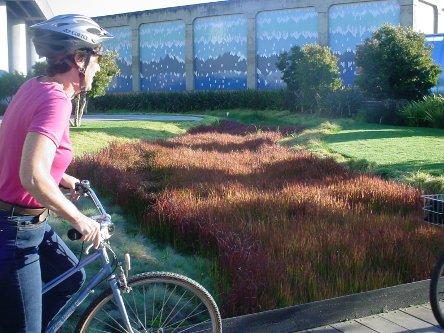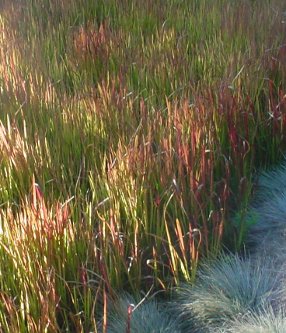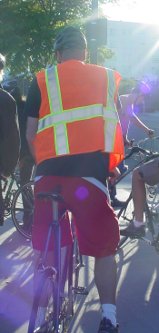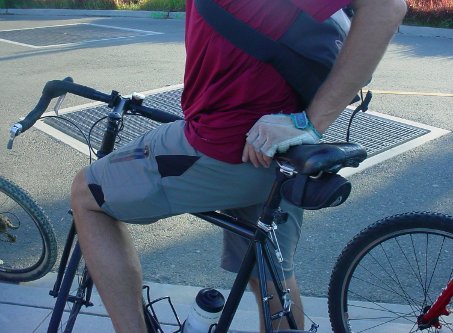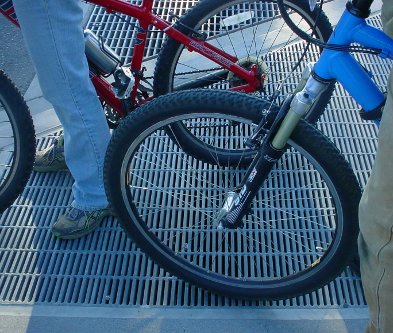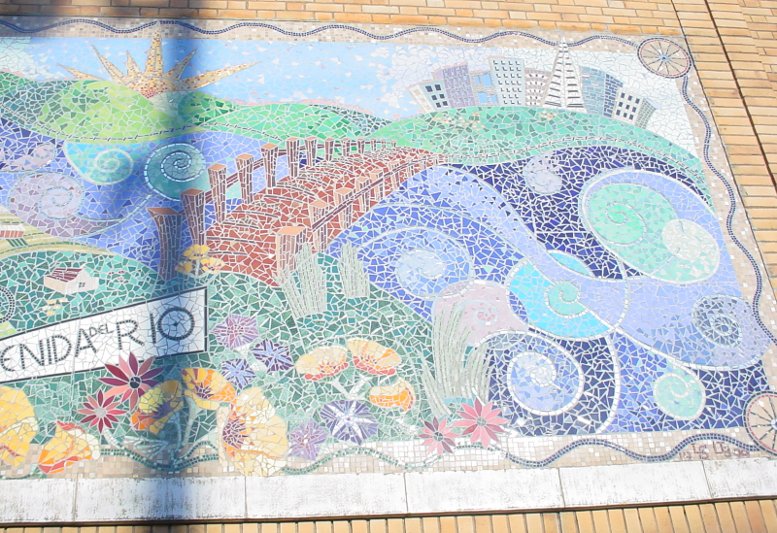Soon after I got to the art gallery
where the sewer tour started, this
guy climbed up a yellow ladder and started talking to us. He explained
that
we would go down Lilac Lane, looking at the art and then do a tour of
some of the important parts of San Francisco's water treatment system.
I should have taken pictures of the
street art on Lilac Lane. Some of it is quite beautiful. Much more than
just "graffiti". If you get a chance to wander down San Francisco's
Lilac Lane (just to look at the art) go for it!
In the early days, there had been a creek that ran down approximately
the route of Cesar Chavez St. Then as the city grew the need for a
plumbing system became more apparent. Finally, about a hundred years
ago, the city fathers in their infinite wisdom built underground sewer
lines along creek and built up the area.
At this point he was explaining that
the sewer lines that go under Cesar Chavez (the road formerly known as
Army St.) are a key part of San Francisco's drainage system. If it's
not working right then the water drains into the homes in the area.
The sewer system has to be big enough
to drain away all of the residential gray and black water as well as
all the rain. This watershed got upgraded once in the 1940s, when they
went from one pipe to two. Since then there has been a lot of
development, and it has resulted in more water use. Now they have
opened the sewer system again to add more capacity. He urged us to look
into the guts of San Francisco as we cross the bike bridge, because
it's likely our only chance. Below is what I saw.
At this point we were standing across
the creek from San Francisco's main water treatment plant.
This guy (I think he is director of the
water treatment plant) explained that sewage treatment boils down to
using the same bacteria to do the same work as happens in our bodies.
That pump does the same work the
peristaltic waved do in our intestines.
That would be San Francisco's lower
intestine and colon. He explained that since they have diverted all of
the toxic waste so it doesn't go there, the solid waste they collect is
good enough to be spread on Solano County fields as fertilizer.
These houseboats are on Mission Creek,
which is sometimes known
as "shit creek". They call it that because on the rare occasion when
rainfall overfills the sewers with rain, raw sewage drains out of the
mouth of the creek and then through this channel to the bay.
That red shed holds the pump that is
overwhelmed when the creek overflows. They do some treatment, skimming
off the stuff that will float, and settling out the stuff that will
settle, but too much water means the rest of it has to go out to sea
"as is". Overflows are rare events. It takes A LOT of rain in a short
period of time for that to happen.
That green box is where the bacteria
level monitoring equipment resides. They put the information it
collects on the web, so that you can see how safe the water is, 24
hours a day and 365 days a year.
As long as they keep building these
residential towers, the demands on the water system will continue to
grow. More people means more water use, and more sewage for the
treatment plant.
When water flows through this creek
bed, the grasses do a good job of cleaning it. I think it just gets
rainwater and dumps it to the bay in some minor inlet.
These grates ventilate the smelliest
stretch of San Francisco's sewer system. There is no known way to do
anything about the odor without causing bigger problems. It didn't
smell that bad, but then we were probably there on a good day.
This mural represents the river that
once flowed by the building it is on. Nowadays that water goes through
the sewer system.
After the tour there was an art show
with an "underfoot" theme. It just seemed wrong to take pictures of
most of the things I saw there. The exception was this logo. The guy
wearing the shirt behind it said "
visit dudeism.com."
